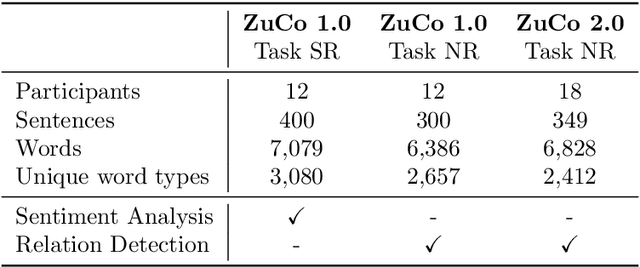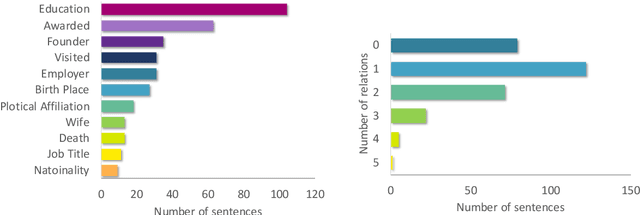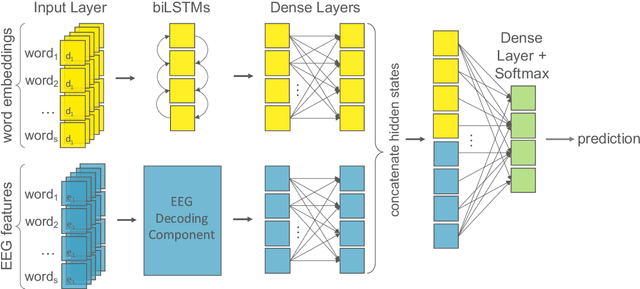Benjamin Glaus
Decoding EEG Brain Activity for Multi-Modal Natural Language Processing
Feb 17, 2021



Abstract:Until recently, human behavioral data from reading has mainly been of interest to researchers to understand human cognition. However, these human language processing signals can also be beneficial in machine learning-based natural language processing tasks. Using EEG brain activity to this purpose is largely unexplored as of yet. In this paper, we present the first large-scale study of systematically analyzing the potential of EEG brain activity data for improving natural language processing tasks, with a special focus on which features of the signal are most beneficial. We present a multi-modal machine learning architecture that learns jointly from textual input as well as from EEG features. We find that filtering the EEG signals into frequency bands is more beneficial than using the broadband signal. Moreover, for a range of word embedding types, EEG data improves binary and ternary sentiment classification and outperforms multiple baselines. For more complex tasks such as relation detection, further research is needed. Finally, EEG data shows to be particularly promising when limited training data is available.
 Add to Chrome
Add to Chrome Add to Firefox
Add to Firefox Add to Edge
Add to Edge